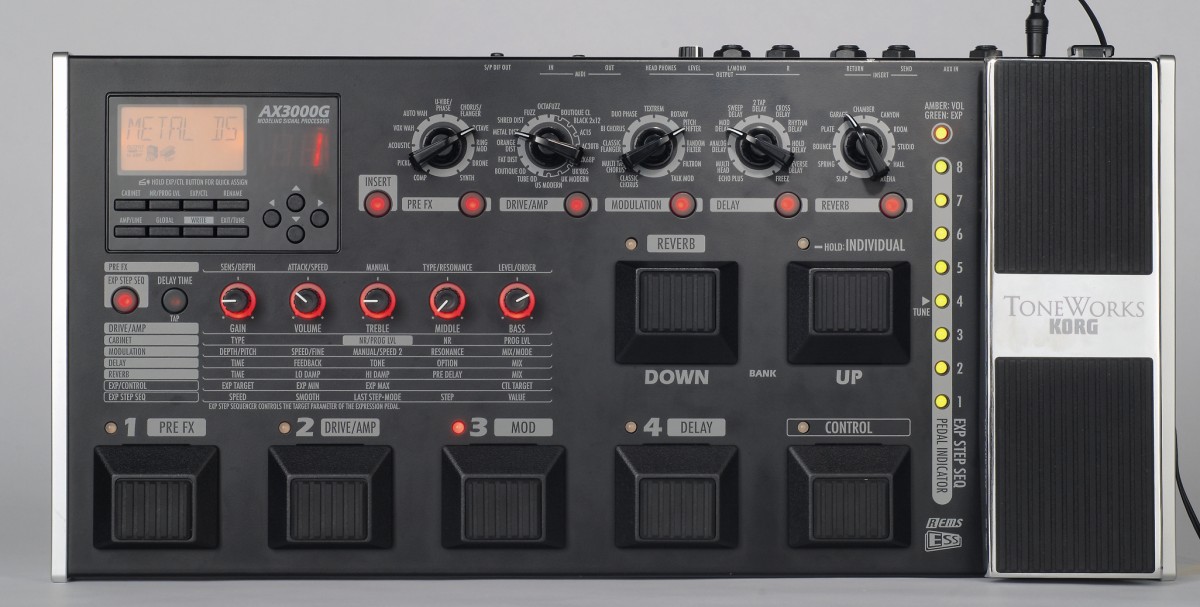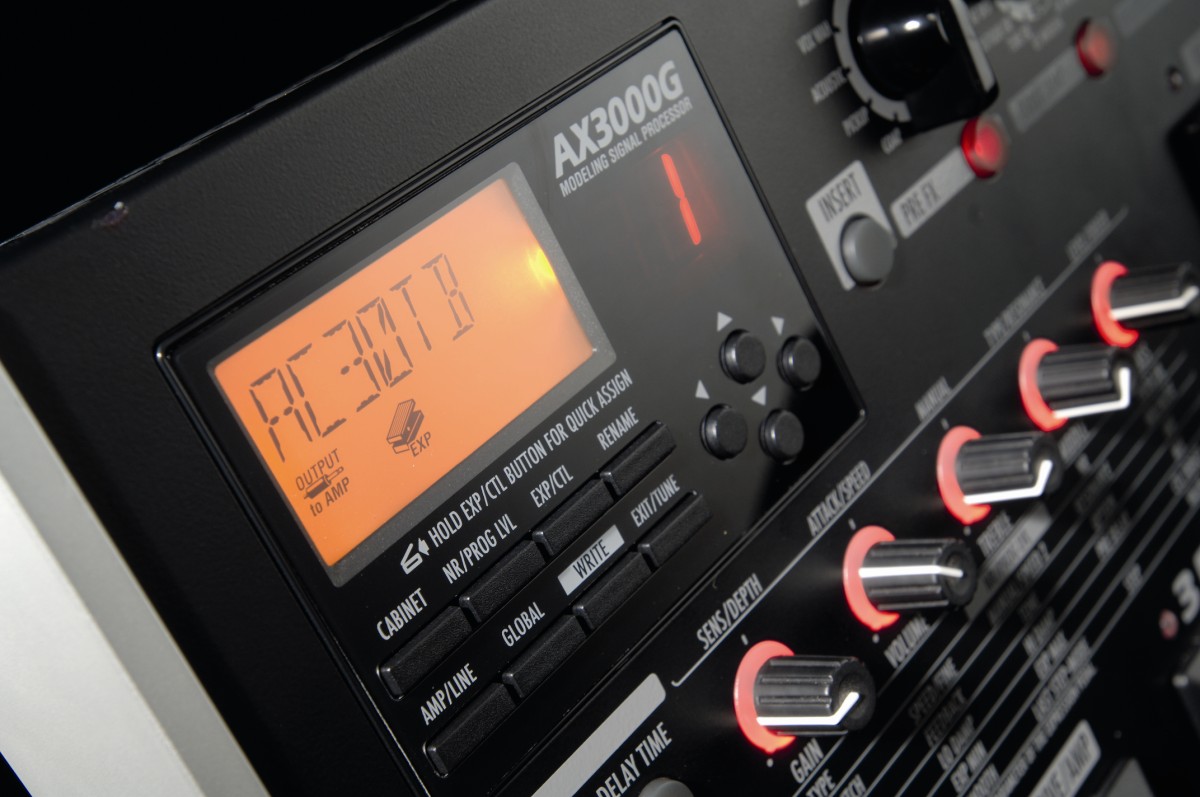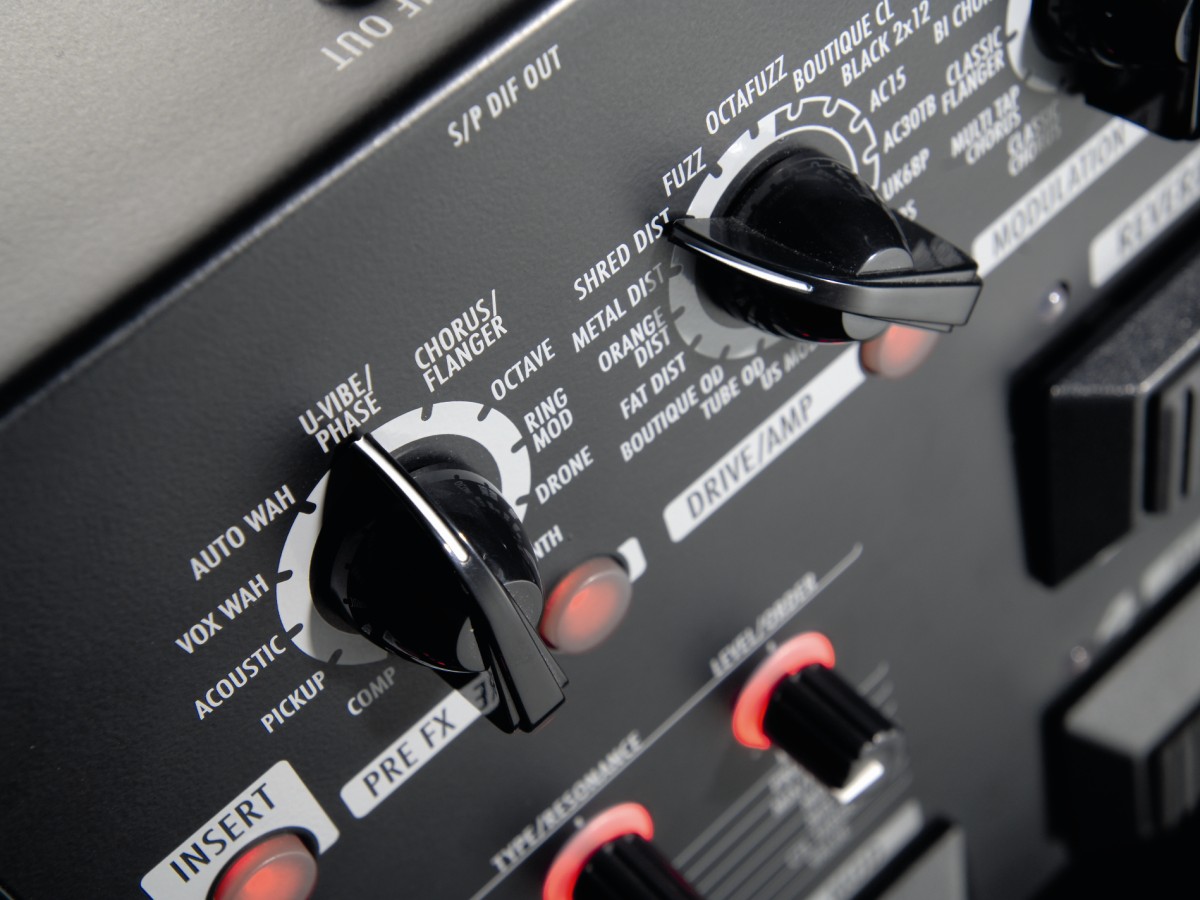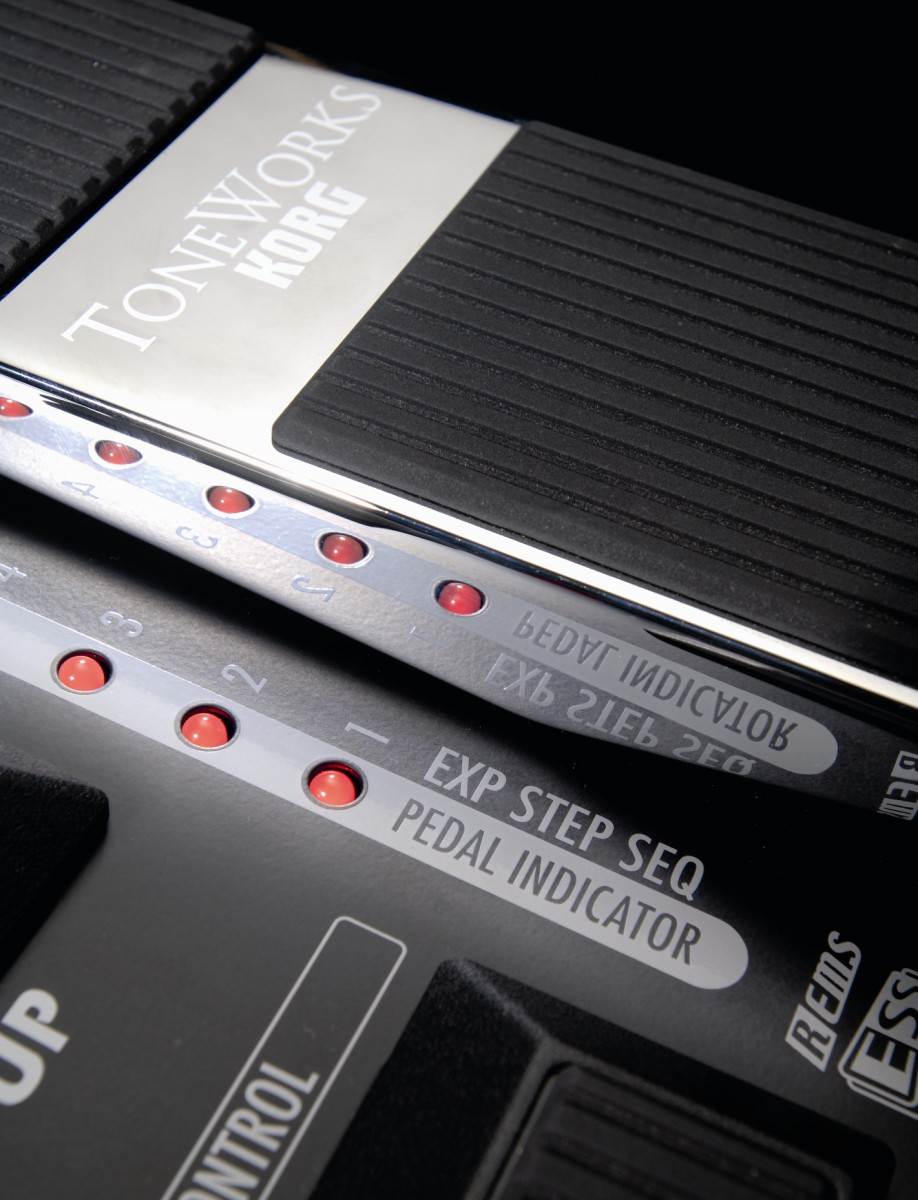MusicRadar Verdict
The range of features in the AX3000G puts it in more direct competition with BOSS´s GT6 than DigiTech´s RP400 or GNX range. At only £249, the AX3000G is a bargain, and probably gives the best value for money of any of the large pedalboard multi-FX units available.
Pros
- +
Simple to use. sensible range of features.
Cons
- -
At this price, nothing.
MusicRadar's got your back





Over the past few years, Korg has provided the only serious competition to DigiTech and BOSS in the world of pedalboard multi-effects units. Along with a number of stompboxes and the tiny Pandora units, the ToneWorks range features multi-effects units to suit a variety of budgets, from the tiny AX10G to the AX1500G.
Housed in a rugged metal casing, the AX3000G builds on the basic design of the earlier AX1000G and AX1500G, with a few adjustments, refinements and new features. It´s hard to believe that only a few years ago, most multi-effects units offered far less real-time control than we´ve now come to expect as standard.
Parameters were once accessed via confusing systems of menus and displayed on tiny LCD screens, and once you´d programmed a preset, it stayed programmed - unless you wanted to spend precious rehearsal time flicking through manuals and squinting at control panels.
Nowadays, though, the control panel of the average multi-effects unit resembles a cross between an amplifier and a row of stompboxes. The AX3000G is no exception here, with a huge range of instantly accessible settings within easy reach. Five chicken-head knobs make up the effects edit section: each knob corresponds to one of the effects modules (Pre FX, Drive/Amp, Modulation, Delay and Reverb) and is used to select the active effect from that module.
The accompanying buttons allow you to select or deselect a module completely. A sixth button, Insert, is used for switching the effects loop in and out of the signal chain. In common with many other pedalboard-style units, there´s then a ‘matrix´ display for setting various parameters. Five knobs mean that a maximum of five parameters are available for each effect, and there´s an additional row marked ‘Cabinet´ for extra control over the Drive/Amp module.
More functions (including patch storage, global parameters and the amp/line output selection) are available via the series of pushbuttons next to the LCD screen. As with the AX1500G, there are two basic modes of operation. In standard mode, sounds are stored as patches, with a total of 96 memory locations divided into 24 banks of four: the rather limited patch navigation of the AX1500G has been greatly improved upon.
Flexibility
The first four footswitches in the front row are for selecting from the four patches in each bank, and a rearranged control panel layout has made space for proper bank up/down footswitches. The fifth switch in the front row toggles the expression pedal on and off. For players who prefer the quick on/ off choices offered by a row of stompboxes, the Individual mode is accessed by holding down the bank up switch. In this mode, five of the footswitches function as simple on/off switches for effects modules.
Even more flexibility is available from the Control footswitch and the expression pedal, both of which can be assigned to a number of parameters. Almost all of the available parameters for the various effects modules can be controlled via the expression pedal, and you can fine-tune its sweep by setting maximum and minimum values. Most of the options available for the Control switch involve turning effects modules on and off, but it can also be used for tapping in delay times or modulation speeds. Ever kicked out a little too enthusiastically at the start of your big flashy solo, intending to turn on the distortion, but also managing to knock the level control down to zero?
Don´t worry, we´ve all done it, and the AX3000G comes with a key lock function to ward against this. With this feature engaged, only the footswitches, expression pedal and exit button (for disabling the key lock) can be used. Another interesting new feature on the AX3000G is the Expression Step Sequencer, or ESS for short. This is used to automatically adjust any one of a range of parameters in a stepwise pattern, with up to eight steps available. The basic concept of having parameters adjusted automatically is nothing new; a few rival units have LFO (Low Frequency Oscillator) functions, and Zoom has been including its Step Phaser effect in its products for years.
However, this is the first time we´ve seen a flexible, assignable version of the step sequencer in an effects unit. The speed, smoothness, number of steps and value of each step are all adjustable, and the range of adjustable parameters is the same as per the expression pedal. One notable feature of the AX1500G which the AX3000G lacks is the phrase trainer, but given the price and extra features on the new model, this seems fair enough. The AX3000G has more of a ‘pro´ feel, with the ESS, digital output and effects loop taking it beyond the realms of bedroom practice tools.
Sounds
The majority of multi-effects units now seem to come with digitally modelled amp/speaker sounds built-in, which means that the resulting sound will depend greatly upon the rest of your rig. For example, speaker modelling tends not to sound great when you go directly from the modelling unit into a guitar amp; it´s generally better to either disable the speaker modelling, or instead use a small PA set-up (or keyboard amp). Conveniently, a quick push of the Amp/ Line button allows you to tailor the AX3000G´s output to your chosen amplfication system, whether to a mixer/recorder or one of three guitar amplfier types.
Browsing the factory presets gives a sound introduction to what the AX3000G can do. There´s a wide range of effects, which should appeal to players of all musical styles. Although there are plenty of lush stereo sounds worthy of any late-eighties LA studio, current musical trends are re?ected in a selection of retro effects modelled on Uni-Vibes, tape echoes and squelchy seventies phasers.
One of Korg´s specialities lies in its use of pseudo-analogue synth sounds, and there´s a pleasing selection here. The results are never totally predictable (driven as they are by magnetic pickups rather than specialised hex pickups), but with a little care it´s possible to coax out some impressive swoops, growls and flutey trills.
In general, the amp models seem to have a more mid-range-heavy sound than those on rival BOSS and DigiTech units, but amp modelling has long since progressed beyond concerns of mere functionality. All of the currently available products are capable of creating fantastic guitar sounds; the crucial factor will be your personal taste. A rich hi-fi sound will give a good impression in isolation, but in the context of a full band, too many high and low frequencies will compete with the bass and drums. The guitar needs that mid-range focus!
MusicRadar is the number 1 website for music makers of all kinds, be they guitarists, drummers, keyboard players, djs or producers...
GEAR: We help musicians find the best gear with top-ranking gear round-ups and high- quality, authoritative reviews by a wide team of highly experienced experts.
TIPS: We also provide tuition, from bite-sized tips to advanced work-outs and guidance from recognised musicians and stars.
STARS: We talk to musicians and stars about their creative processes, and the nuts and bolts of their gear and technique. We give fans an insight into the actual craft of music making that no other music website can.
With its latest free update, Ableton has finally turned Note into the app I always wanted it to be
Technically capable, but struggle to make your tunes sound musical? 5 simple music theory hacks to make your tracks stand out
"Despite its size, it delivers impressive audio quality and premium functions as well as featuring a good selection of inspired sounds": Roland GO:Piano 88PX review










